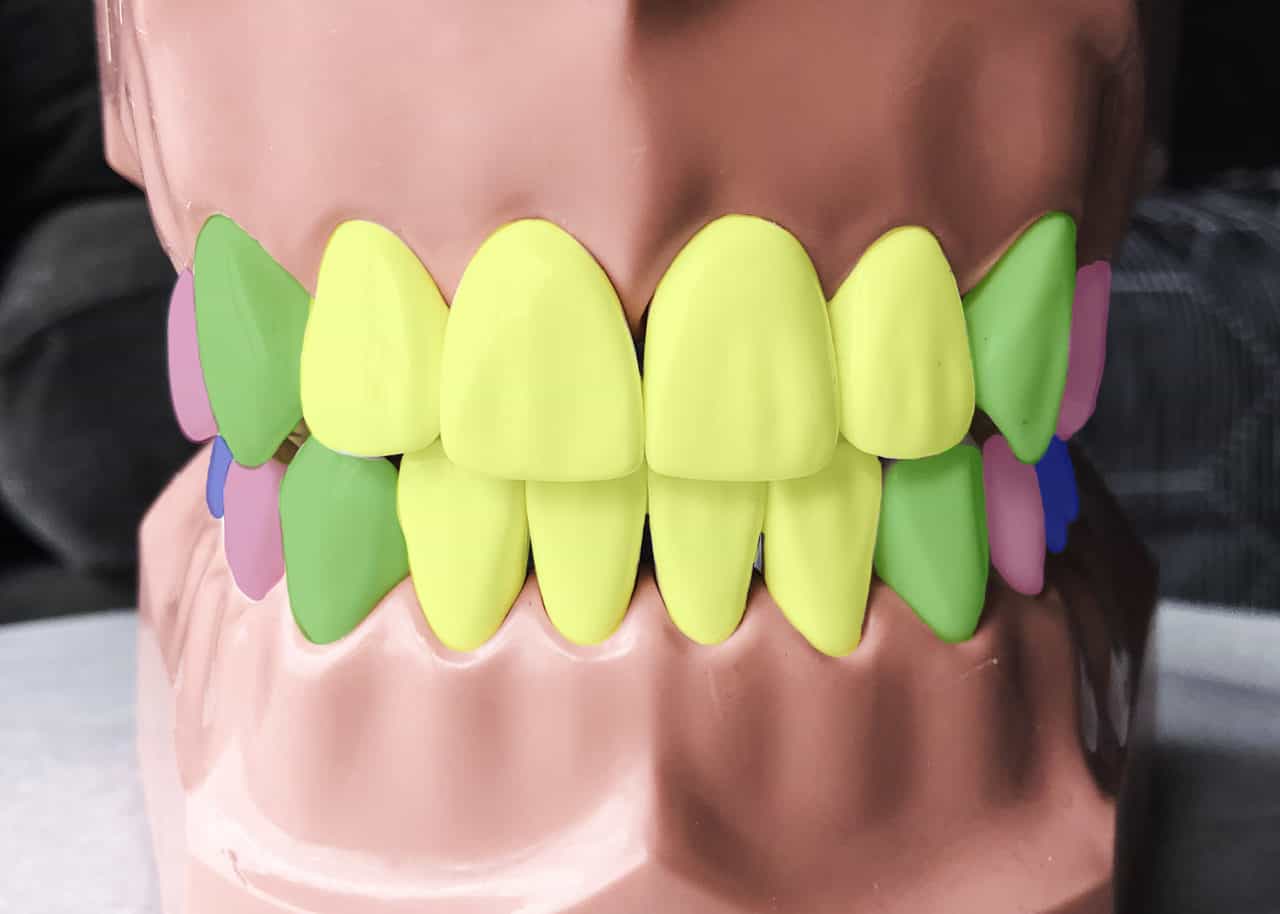
Our teeth give us so much. They allow us to do things that are important to life and play a vital role in our digestive system. But each tooth that erupts in our mouth is different and has a specific role to play.
The function of our teeth is to slice, tear, grind and break down our food before we swallow and digest. The incisors slice and shear, canines grip and tear, premolars tear and crush, and molars grind, crush and chew. Teeth also help us speak, smile, and frame our faces.
Each tooth is different, providing a separate, but equally important function. Below I go over each type of tooth and its role that it plays in our body! Also, I go over the differences between adult (permanent) teeth and baby (primary) teeth, how they develop, and why some teeth never form!
What are the 4 types of teeth and their function?
The four types of teeth are; incisors, canines, premolars, and molars. All the teeth are differentiated by colour in the pictures below.
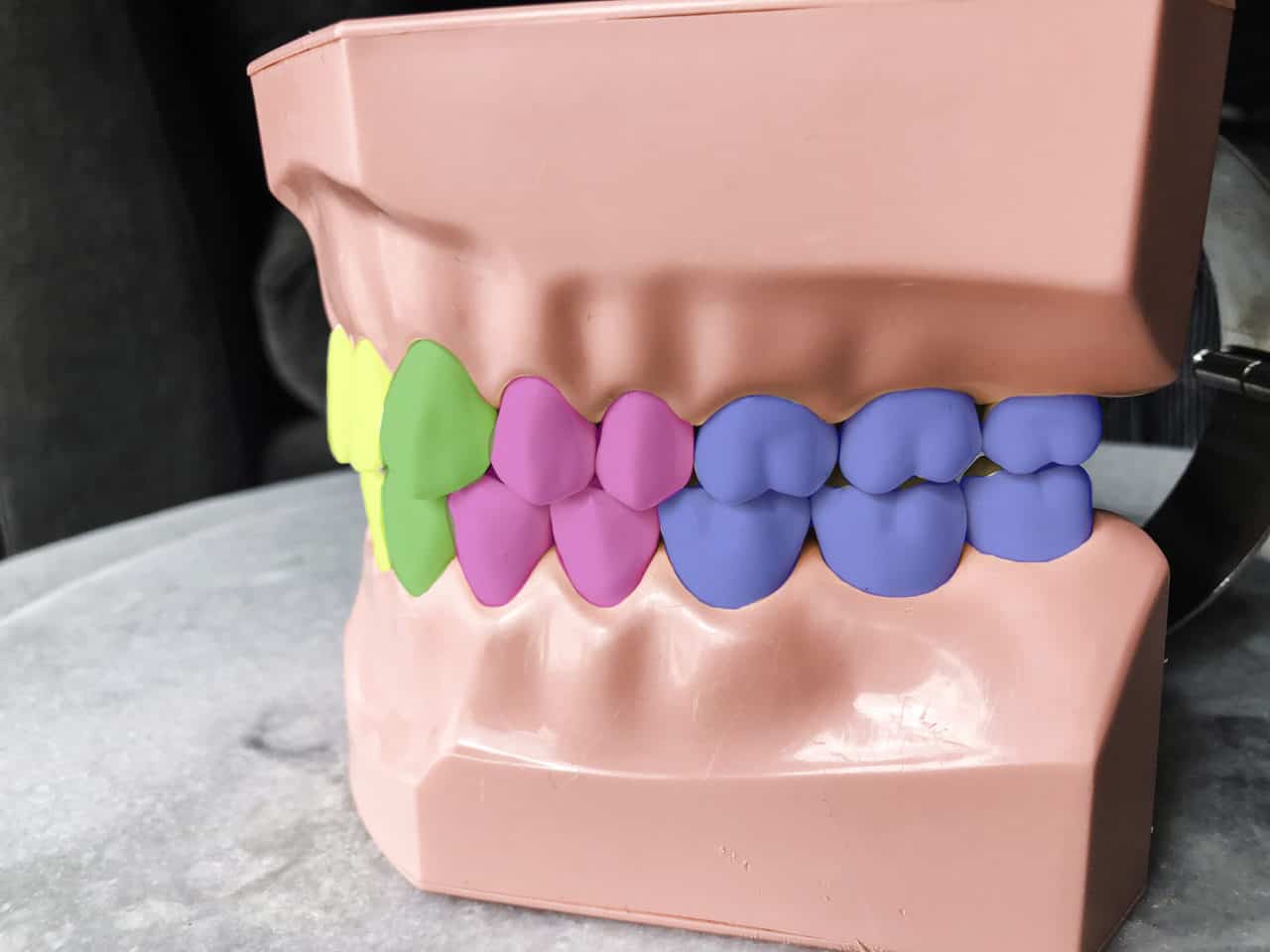
Yellow: Incisors
Green: Canines
Pink: Premolars
Blue: Molars

Yellow: Incisors
Green: Canines
Pink: Premolars
Blue: Molars
Incisors
The incisors are the front 4 teeth in the mouth on both the top and bottom arch for 8 in total. These teeth have one root and one sharp cutting edge.
You can think of the incisors like an axe. With one sharp edge, an axe can easily (depending on how strong you are) cut into a tree, and eventually, the tree will be cut down.
That is the job of the incisors, to easily cut into our food to make smaller pieces that can be chewed more easily.
There are 2 types of incisors, central and lateral. The central incisors are closest to the midline, with the lateral incisors right beside them, farther from the midline.
In the photo below, the central incisors are labelled tooth 1, and the lateral incisors are labelled tooth 2.
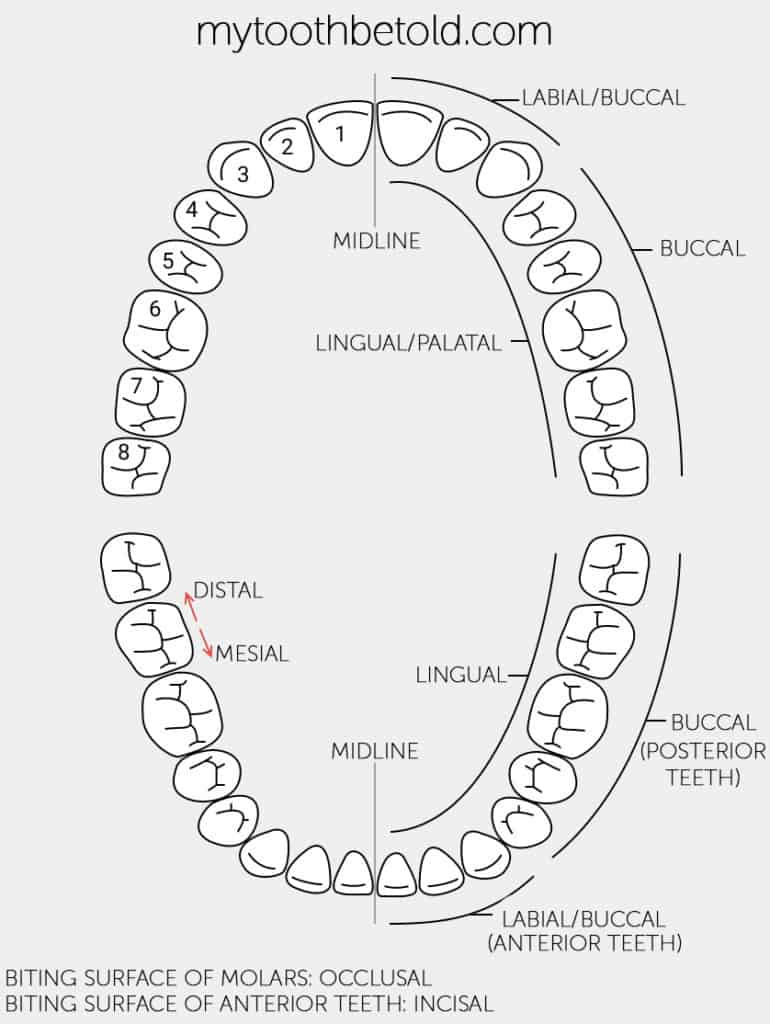
Canines
The canines are indicated by the colour green in the photo at the beginning of this post.
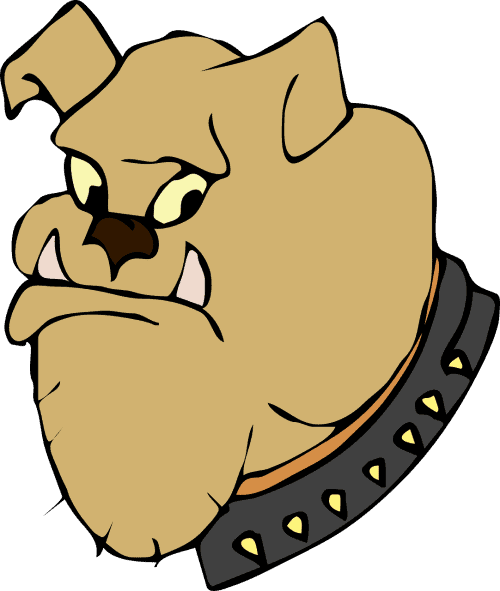
Canines also are known as eye-teeth and are the 3rd tooth from the front/midline of the mouth. The canines have the longest root in the mouth, and it frames the face. We have a total of 4 canines in our whole mouth.
If you put your finger on the outside of your face right beside your nostrils and you push gently, you will probably feel the bump where the root of the canine is!
The canines have one pointy cusp, and the sole role of this tooth is to grip the food, so it stays in place and to tear the food into bite-sized pieces.
With the help of the tongue, the food is then moved to the pre-molars and molars for extra break down.
I remember when I was younger, my parents and I were looking for different orthodontists to complete my treatment for braces. The following story is the reason why I always advocate for second opinions. Even though we are trained and have years of experience, things can change quickly in the dental industry, and we just don’t know everything.
One orthodontist I went to wanted to pull out and extract all my canines. This method of treatment is extremely outdated and not practiced often anymore.
Thankfully both my mom and I thought that was extreme to pull teeth and opted for another opinion. I ended up with an incredible orthodontist who said that I did not need any teeth pulled to have a great result!
When canines are pulled and extracted, it can affect the shape of the person’s face. Most often, if there is not enough room in the mouth for all the teeth, premolars will be extracted.
Canines are more yellow than the other teeth
Canines are more yellow than the rest of the teeth in the mouth because they have less white enamel on the crown of the tooth and more yellow dentin underneath the thinner enamel. This allows the yellow dentin to show through more, making the tooth appear more yellow/darker in colour.
Read now: Why Teeth Become Yellow and Whitening Tricks That Worsen It
Premolars
Premolars are indicated by the colour pink in the photo at the beginning of this post. There are 8 premolars in total in the mouth, with 4 on the top arch and 4 on the bottom arch.
The purpose of the premolars is to tear and crush the food because they have a wider biting surface than the canines and incisors. Not only do the premolars have a wider biting surface, but they also have some pretty sharp cusps that tear the food similar to canines.
Molars
Molars are indicated by the colour blue in the photo at the beginning of this post. There are 12 molars in total, including the wisdom teeth.
The third molars, which are often called wisdom teeth, are sometimes categorized separately from the molars. This is because they don’t follow a set guideline of how the teeth are formed. Also, they are not present in primary dentition, which only has 2 molars.
The molars have a very broad and wide chewing surface with many grooves and cusps to further break down the food when chewing. The main purpose of the molars is to grind, crush, and chew. The molars essentially turn the food to mush (unless you’re a super-fast eater and barely chew your food)!
The more the food is broken down by the teeth, the more it will mix with saliva to help start the process of digestion and make it easier.
Often wisdom teeth are extracted because they can cause more harm than good. I wrote a post about how wisdom teeth are removed, and even why they are not removed for certain situations. You can find that post linked below!
Read now: How Are Wisdom Teeth Removed?
Permanent Dentition
How many teeth are in the permanent dentition?
There are 32 teeth in the permanent dentition, which includes wisdom teeth. The eruption of the permanent teeth ranges from 6 years of age to 21 years of age, with the front teeth first to emerge into the mouth, and the wisdom teeth being the last when we are wiser/older!
Primary Dentition
How many teeth are in the primary dentition?
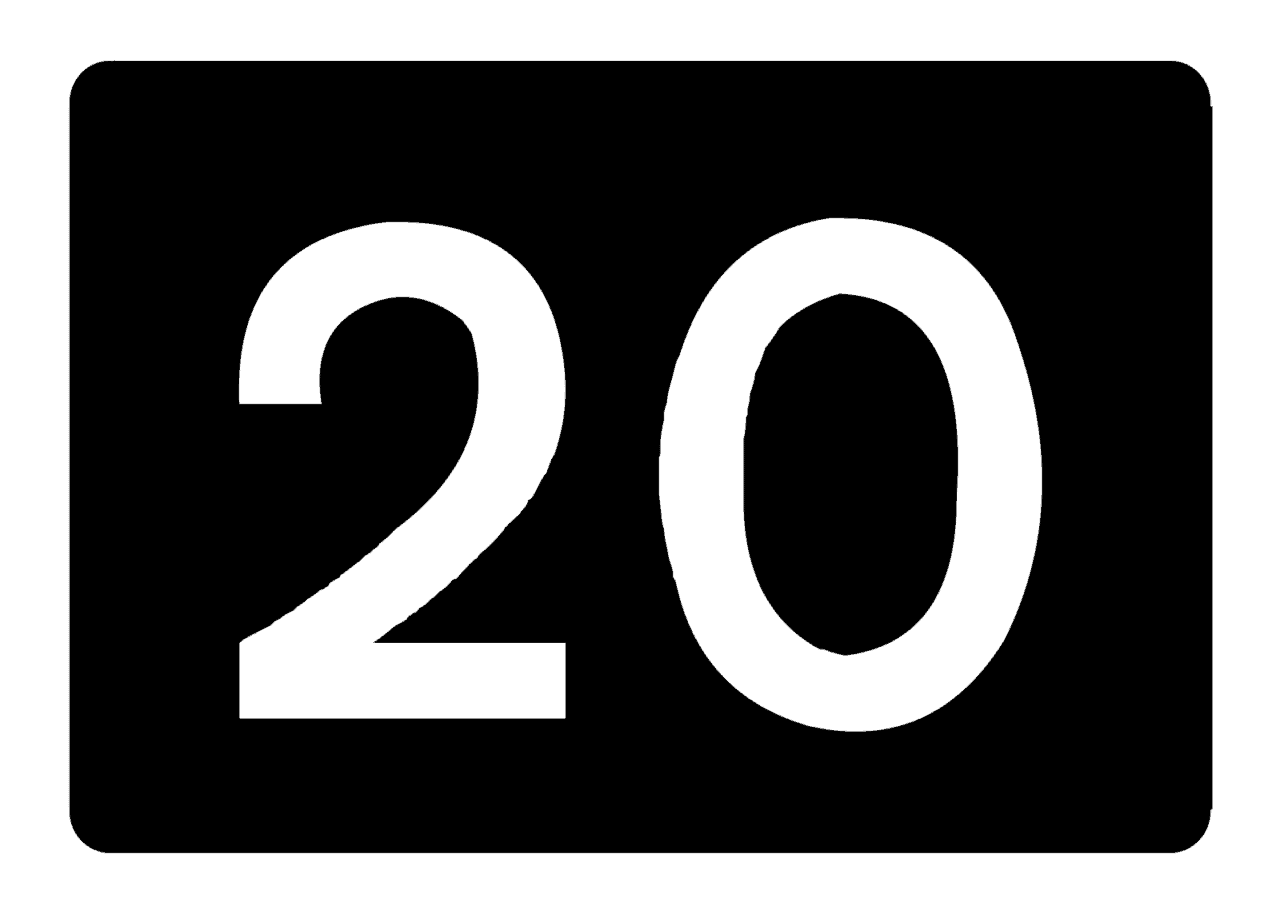
There are 20 teeth in the primary dentition. The reason why there are fewer teeth in the primary dentition than the permanent (besides the obvious fact that the mouth is much smaller), is that there are no pre-molars or third molars.
The roots of primary molars (8 in total) are wider and more flared when compared to the permanent teeth. This is to guide the permanent teeth into the correct position in the mouth.
Role of saliva with digestion
Saliva plays an essential role in the digestion sequence. The saliva helps to soften food and make it more suitable for swallowing. The saliva also has a certain enzyme called amylase that starts to break down carbohydrates. This is also known as chemical digestion.
Development of the teeth – how they form
Our teeth start forming before we are even born! The teeth start as embryonic cells and form into small buds that will proliferate to form a tooth within the jaw bone. The crown/top of the tooth forms first, with the roots of the teeth forming slowly. As the roots form, the teeth will start to push through the bone and gum tissue, emerging into the mouth.
Tooth development is a very complex process, and things can go wrong along the way. Sometimes teeth don’t even form, and teeth are missing from the dentition.
Missing teeth
Sometimes teeth do not develop, and teeth are missing. This can be hereditary, or just an issue that randomly occurs due to a variety of reasons.
The most common teeth that are missing are the third molars, also known as wisdom teeth.
You can read more about the amazing reasons why third molars are slowly being eliminated.
Read now: Why Do Some People Not Have Wisdom Teeth?
The next in line for the most commonly missing teeth are the 2nd premolars, which are the 5th tooth from the front midline on the mouth.
The next commonly missing teeth after the premolars are the maxillary lateral incisors (located on the upper arch, 2nd teeth from the midline). These teeth are the 3rd most commonly missing teeth in the mouth.
Sometimes instead of being fully missing, the tooth forms really small, resembling a peg. These are called peg-laterals. Sometimes people will have crowns put on them to make them more aesthetically pleasing.
I really hope that this information has taught you something new, have a great day!
Holly 🙂

